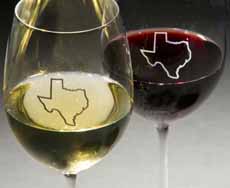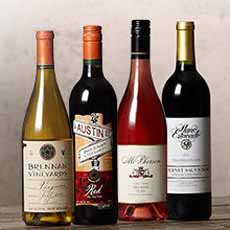TIP OF THE DAY: Texas Wines
|
Recently we attended a tasting of Texas wines from 14 wineries, held in New York City. If you’re not familiar with Texas wines, it’s because the residents of Texas buy up much of the production, leaving little to distribute elsewhere (check on Wine.com and other online etailers). Production from this relatively new wine area has not yet amped up to keep pace with demand. But based on the success of the wines over the last decade—Texas wineries win more than 150 medals annually at prestigious competitions in California and the Finger Lakes—there is more planting. In a few years, this will result in more bottles to go around. Currently, the wines—red, white and rosé—are very well priced, most at $10 to $20 a bottle. That’s half the cost of a Napa Valley wine, much owing to the large amount of land available in Texas, which keeps the cost of buying acreage down. How popular are Texas wines? The number of visitors on the main Texas wine trail (Texas Hill Country) now make it the second most popular wine route in the U.S. So in the not-so-distant future, the appellations of Texas Hill Country and Texas High Plains—which are AVAs, American Viticultural Areas, an official designation*—may become as familiar as California’s Napa Valley and Sonoma Valley. Today, there are more than 200 wineries in Texas. It is the fourth-largest wine producing state in the nation, after California, New York and Washington. The classic Bordeaux grapes are planted, along with Rhone grapes, some Italian varietals, and lots of tempranillo, the primary grape of the Rioja region of Spain. Cabernet Sauvignon and Chardonnay are the most planted wines in the state, followed by Merlot, Syrah, and Muscat Canelli. Texan vintners also plant Zinfandel, Sangiovese and Viognier. The Texas Department of Agriculture lists 21 varietals grown in the state. As in other wine regions around the world, different AVAs have terroirs that favor some varieties over others. As vintners evaluate the quality of wines produced from their land, varietals like Sauvignon Blanc and Chardonnay are planted less, while Syrah and Muscat Canelli have increased. Great success with the wines has increased plantings of grape varietals that flourish in Italy, dolcetto and vermentino; Spain’s tempranillo; and France’s Rhone Valley’s viognier, roussanne and mourvedre. |
 [1] Texas is the fourth-largest wine growing state in the U.S. (photo courtesy Dallas Morning News).
|
|
|
TEXAS WINE HISTORY The first vineyard in North America was established in Texas by Franciscan priests, around 1662 [source]. As mission outposts expanded, European settlers followed, bringing more grapevine cuttings. Vineyard plantings further developed through the 1800s. With the burgeoning popularity of California wines in the 1970s, Texans renewed their interest in viticulture. The Bell Mountain AVA, designated in 1986, was the first established AVA in Texas. Today, Texas has over 4,000 acres of vineyards under cultivation…and based on projections, many more to come. If you’re headed near any of Texas’ American Viticultural Areas (AVAs, designated grape-growing regions), stop by the wineries and avail yourself of the pleasures of Texas Wines. Also check out the Texas Wine Trail programs, for which you can buy tickets. *An American Viticultural Area (AVA) is a designated wine grape-growing region in the U.S., with boundaries defined by the Alcohol and Tobacco Tax and Trade Bureau of the U.S. Department of the Treasury. Here’s more about it. These designations allow a given quality, reputation, or other characteristic to characterize wines made from grapes grown in a particular AVA. California AVAs, including Napa Valley, Sonoma County and Mendocino, among others, are well-understood for the differing characteristics of their wines. As of 2016, there were 238 recognized AVAs in the U.S.; 8 of them in Texas.
|
||




